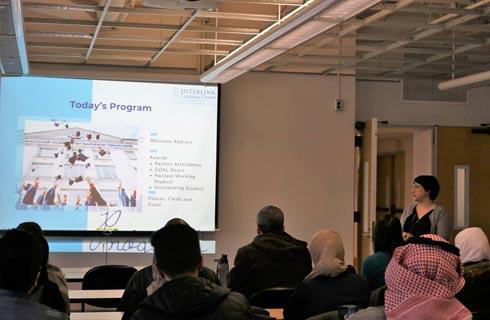- IDP China>
- 课程库>
- 人文科学>
- 地域、民族、文化和性别研究>
- 区域研究>
- Honours Bachelor of Arts in Near and Middle Eastern Civilizations - St. George
荣誉近东和中东文明文学士学位
Honours Bachelor of Arts in Near and Middle Eastern Civilizations - St. George

学历文凭
Bachelor Degree with Honours

专业院系
Department of Near and Middle Eastern Civilizations

开学时间

课程时长

课程学费

国际学生入学条件
IDP—雅思考试联合主办方

雅思考试总分
6.5
了解更多
雅思考试指南
- 雅思总分:6.5
- 托福网考总分:89
- 托福笔试总分:160
- 其他语言考试:Pearson Test of English (PTE) Academic - Overall score of 65 with no part below 60.
CRICOS代码:
申请截止日期: 请与IDP顾问联系以获取详细信息。
课程简介
The Department is concerned with the interdisciplinary study of the civilizations and cultures of the Near and Middle East from Neolithic times until the present, including their archaeology, history, mythology, religion and thought, art and architecture, and language and literature (Akkadian, Ancient Egyptian, Arabic, Aramaic, Coptic, Ge’ez, Hebrew, Persian, Sumerian, Syriac, and Turkish). The Department’s programs provide students with a unique opportunity to study non-Western complex societies and civilizations.The term Near East has been used in scholarship to refer to the region of Southwest Asia at the eastern end of the Mediterranean, including the Levant, Mesopotamia, Egypt, and Anatolia, from ancient times until the advent of Islam in the seventh century AD. The term Middle East refers to a broader geographical area stretching from North Africa to West and Central Asia. Although Islam became the predominant religious culture and remains so to the present day, the Middle East has been home to many religious communities, including Christians, Jews, Zoroastrians, and others. And while Arabic functioned as the interlanguage in much the same way as Latin did in the Christian West, many other languages and cultures (notably Persian and Turkish) contributed to the formation of Islamic civilization. The Department welcomes students of all academic backgrounds who wish to learn about the Near and Middle East. Many courses do not require knowledge of the languages of the region. However, the Department strongly believes that a deeper understanding of the cultures of the Near and Middle East can be achieved through the study of one or more of its languages.
相关申请
 预科
预科 奖学金
奖学金 实习机会
实习机会 在校学习
在校学习 跨境学习
跨境学习 校园授课-线上开始
校园授课-线上开始 在线/远程学习
在线/远程学习
学校排名

世界排名21
数据源:泰晤士高等教育世界大学排名
关于多伦多大学

多伦多大学(University of Toronto),始建于1827年,坐落在加拿大的第一大城市多伦多,是加拿大的一所顶尖学府,亦为加拿大传统四大校之一。安大略省政府及议会环绕在市中心的女王公园四周,现已发展成为一所“一主两翼”格局的世界知名研究性大学--坐落于市中心的圣乔治校区(St. George),历史最为悠久,与3个更小的大学联盟并有享有七大学院制,与十座教学医院有着密切关系;东西向延伸至世嘉堡与密西沙加,UTSC有着乡村般的风光,风景别致,搭乘TTC一小时路程;UTM则是在西边,有校车往返。在学术及研究方面,多伦多大学一直处于领先地位。其经费、捐款、国家教授奖项、研究出版规模和藏书量皆为加拿大之首。多伦多大学出版社在加拿大乃至全北美影响深远。实行独立书院制的学府,荣获诺贝尔奖的教授人数是加拿大最多的。维多利亚学院是其最富有的学院之一 提供更多奖学金和相关设施。多伦多大学亦为美国大学协会中仅有的两所非美国学府之一。多伦多大学每年发表的科研论文数量在北美仅次于哈佛大学,引用数量位居世界前五。主要贡献:干细胞及胰岛素的发现,电子起搏器、多点触摸技术、电子显微镜、抗荷服的发明和发展,NP完全理论,以及发现首个经核证的黑洞。
本校相关课程
其他相关课程

妇女和性别研究文学士学位(3年)
 劳伦森大学
劳伦森大学学历文凭
Bachelor Degree
开学日期
课程费用总额


妇女和性别研究文学士学位
 温尼伯大学
温尼伯大学学历文凭
Bachelor Degree
开学日期
课程费用总额


土著研究哲学博士
 特伦特大学
特伦特大学学历文凭
Ph.D.
开学日期
课程费用总额


文化研究哲学博士
 特伦特大学
特伦特大学学历文凭
Ph.D.
开学日期
课程费用总额


性别与妇女研究文学士学位
 特伦特大学
特伦特大学学历文凭
Bachelor Degree
开学日期
课程费用总额


文化研究文学士
 特伦特大学
特伦特大学学历文凭
Bachelor Degree
开学日期
课程费用总额
































